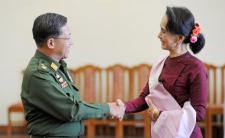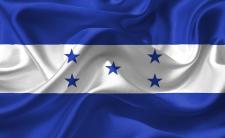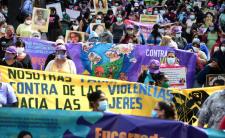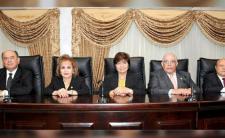The Republic of Honduras is a former Spanish Colony in Central America bordering the Caribbean Sea, between Guatemala and Nicaragua and bordering the North Pacific Ocean, between El Salvador and Nicaragua. It was previously known as Spanish Honduras, to differentiate it from British Honduras or present day Belize
Political system and history
Honduras was under Spanish colonial rule from the 15th century until 1821 when – following a rapid decline in Spanish influence, Spain decided to grant independence to all its Central American colonies. Modern Honduras is a constitutional democracy with a US style presidential system of government.
Constitutional history and development
Like most Latin American States, Honduras has had a history characterized by an alternation of military and civilian rulers. Because the constitutions were mostly designed to serve the interests of the different rulers, they were changed as many times as power changed hands and therefore had very short lives.
Constitutional development between 1825-1894
Constitutional developments during this period saw the adoption of four constitutions. The first one in 1825 and considered to be Honduras first constitution was adopted within the framework of the United Provinces of Central America – a loose federation of states made up at the time of Honduras, Guatemala, El Salvador and Nicaragua. The 1825 Constitutions, like that of most Latin American Countries of the day reflected strong Spanish tradition- creating three branches of government. It was replaced in 1839 by a new constitution, following Honduras’s separation from the Union to become independennt. The constitution emphasized the protection of individual rights. Another constitution in 1865 guaranteed the right of habeas corpus. In 1880, a new constitution introduced many new features to the Honduran political system, including the principle of municipal autonomy and the state's role in promoting economic development. Separation of church and state was also an important feature
Another constitution promulgated under the presidency of Policarpo Bonilla Vásquez in 1894 and considered its most progressive abolished capital punishment. This constitution served as a model for future constitutions despite not being implemented for the most part.
Constitutional developments between 1924 and 1982
Although it was hardly implemented in full, the 1894 constitution remained in place until 1924 when a new constitution was adopted. The 1924 constitution introduced new social and labor provisions, and attempted to expand legislative power vis-à-vis the executive. These reforms were curtailed when in 1939 and, a new charter promulgated under the dictatorship of Tiburcio Carías Andino reinforced executive powers.
In 1957 under the presidency of Ramón Villeda Morales, a new constitution was promulgated and established a separate body as a constitutional institution, to manage electoral processes. With the establishment of military rule under Colonel Osvaldo López Arellano in 1967, another constitution was adopted and remained in force through 1982 when another constitution was adopted.
The 1982 Constitution
Following decades of military rule, a Constituent Assembly was convened in 1982 and drafted what has remained to this day Honduras’ fundamental law, despite 26 amendments to it. Although it provides for most of the political institutions and processes remniscent of the previous charters, it has been described as Honduras’ most advanced constitution. It provides for a republican, democratic and representative government composed of the legislative, executive and judiciary. Although it establishes that these branches are complementary, independent, and not subordinate to each other, the practice shows that the executive branch has occupied centre stage dominating the other two branches of government.
Key timelines in the 1982 process
| 1980 | The Militaray regime of General Policarpo Paz Garcia decides to restore civilian rule |
| April 20 1980 | A 71 seat Constituent Assembly is elected to write a constitution in preparation for transition to civilian rule. |
| November 1981 | Roberto Suazo Córdova is elected by a constitutional convention as the first constitutional president. |
| January 20 1982 | New Constitution enters into force |
| Branch | Hierarchy | Powers | Removal |
|---|






Share this article